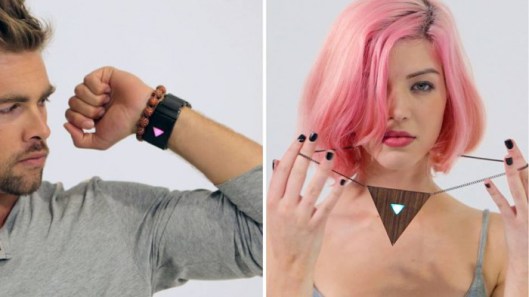We have already revealed a very serious limitation of the makey makey board. To sense a touch interaction with a board, we have to close a circuit. To close the circuit one participant of the interaction have to be connected to the ground of the board and the other to the power of the same board. As a result of this, the participants of our 'game' would have to be wired to the same makey makey board, which is a serious limitation in our case.
Two other options we came up with to sense physical interactions between participants are the followings. We could use Hall sensors to measure the magnetic field of small industrial magnets. In this way, there are two options. Either, we could put magnets on a t-shirt and a sensor in a bracelet or ring, or the other way around. With the second solution (sensors on t-shirt and magnet in bracelet) we could even figure out the type of interactions as we would see which sensors are the closest to the magnet in the other participant's bracelet or ring. Although, this solution would entail much more difficulties in the implementation.
Two other options we came up with to sense physical interactions between participants are the followings. We could use Hall sensors to measure the magnetic field of small industrial magnets. In this way, there are two options. Either, we could put magnets on a t-shirt and a sensor in a bracelet or ring, or the other way around. With the second solution (sensors on t-shirt and magnet in bracelet) we could even figure out the type of interactions as we would see which sensors are the closest to the magnet in the other participant's bracelet or ring. Although, this solution would entail much more difficulties in the implementation.
Our second option is to use RFID reader to read little RFID tags. In this way we could put the small 2cm diameter RFID tag discs on a t-shirt. Each RFID tag has a unique identifier, so we could also figure out the type of interactions in an easy way. One limitation what we discovered while reading about this solution was that 2 or more tags in the reader's range will cause it to not read any tags at all. However, there were readers and tags available in the lab on Friday, so we had the possibility to try it out. What we found is that the range of the reader is not to big, so tags can be placed quite close to each other without interfering. We even tried if it senses the tags through the palm or fingers with success. So using it as a ring would work, we'll might go with this solution.
Although this technology has limitations as well. Without skin to skin interaction there will be limited number of parts on the body where we can sense interactions. One big challenge is to sense high5s and hand shakes without gloves.





